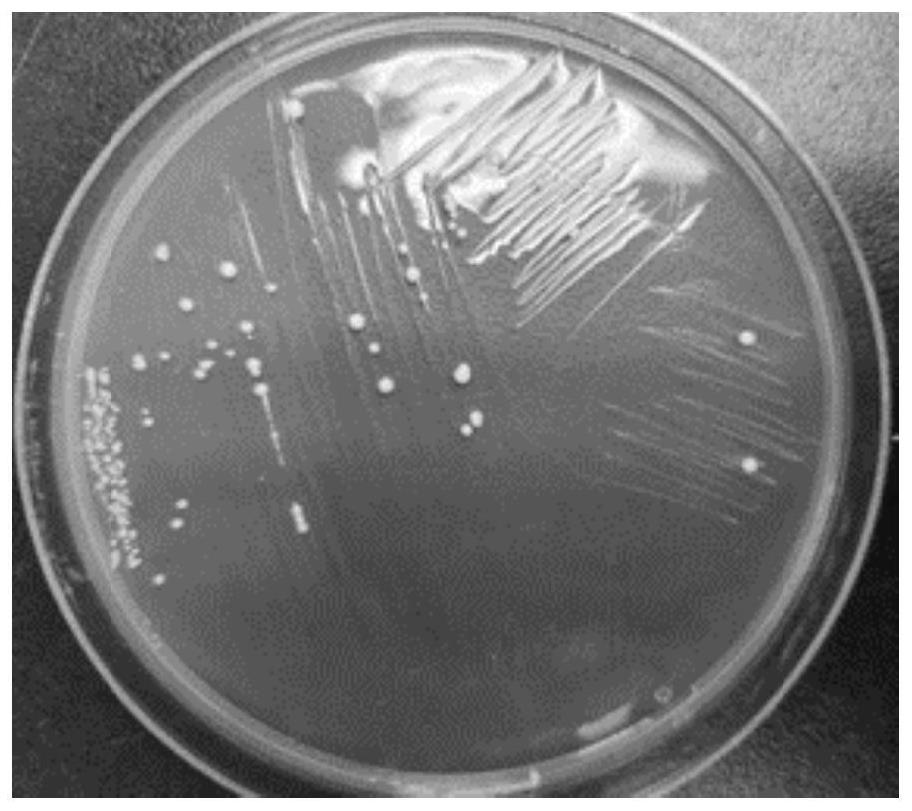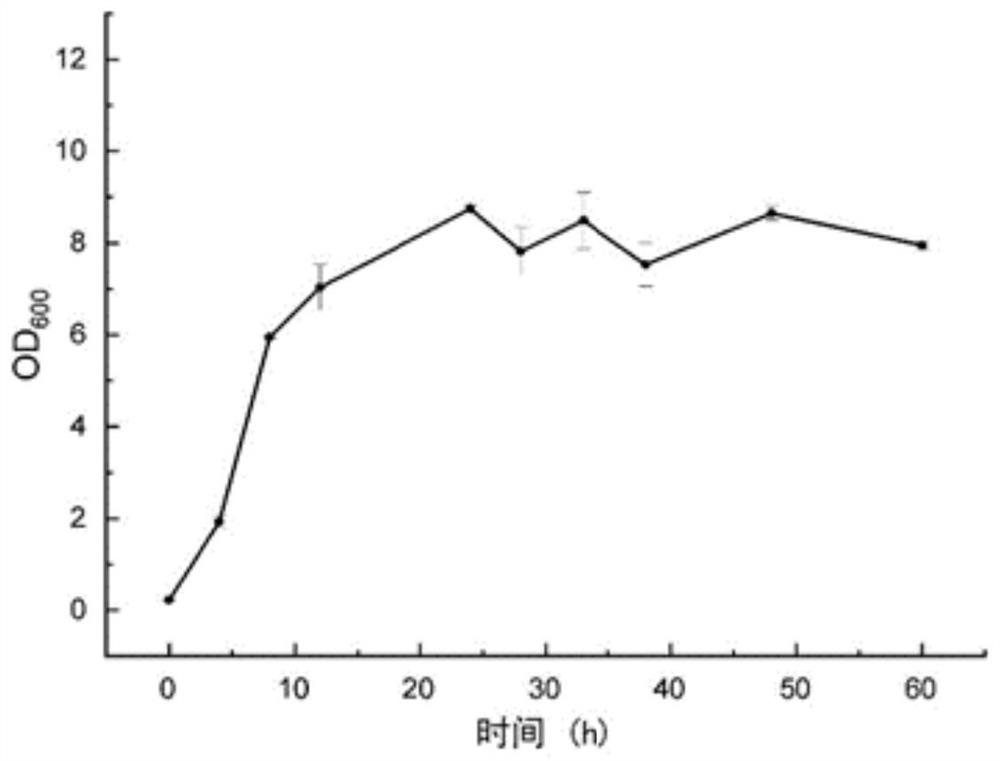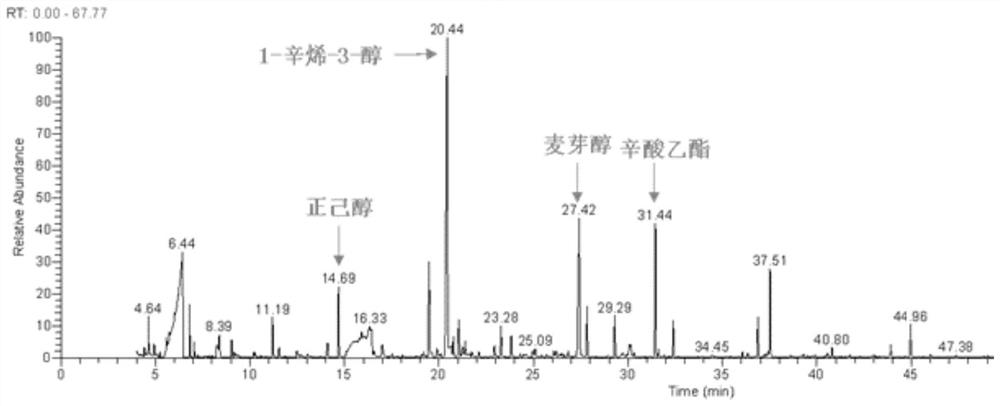Lactobacillus casei DY13 as well as product and application thereof
A technology of Lactobacillus casei and bacteria agent, applied in the direction of Lactobacillus, application, bacteria, etc., can solve the problems of livestock and poultry growth performance and feed utilization rate reduction, lack of feed protein resources, etc., to improve immunity and good antibacterial activity , the effect of improving nutritional value
- Summary
- Abstract
- Description
- Claims
- Application Information
AI Technical Summary
Problems solved by technology
Method used
Image
Examples
Embodiment 1
[0070] Embodiment 1: the screening of bacterial strain
[0071] (1) Medium: MRS medium (g / L): peptone 10.0, beef extract 8.0, yeast powder 4.0, glucose 20.0, dipotassium hydrogen phosphate 2.0, triammonium citrate 2.0, sodium acetate 5.0, magnesium sulfate heptahydrate 0.58 , manganese sulfate tetrahydrate 0.25, Tween 80 1mL, distilled water 1L, sterilized at 115°C for 20 minutes.
[0072] (2) Screening: The strain was isolated from kimchi purchased from Wuxi Auchan Supermarket. The kimchi was placed in MRS medium for 24 hours at 37°C and cultured for 24 hours. The culture solution was diluted 100 and 1000 times with sterile water, and 100 μL was applied to the MRS solid medium, cultured at 37°C for 24 hours, a strain of lactic acid bacteria (such as figure 1 shown). Its microbiological characteristics are typical positive Gram staining, medium-sized bacteria, milky white colonies on the culture medium, smooth and moist surface, raised, and a peculiar sour smell. The strain...
Embodiment 2
[0074] Embodiment 2: Identification of physiological and biochemical characteristics of Lactobacillus casei DY13
[0075] (1) Litmus milk experiment: Milk mainly contains lactose and casein, in which litmus is added as indicator and redox indicator, litmus is lavender when neutral, pink when acidic, blue when alkaline When the color is restored, the milk fades from top to bottom and returns to white. Lactic acid bacteria ferment lactose to produce acid, litmus turns red, and when the acidity is high, it can make milk coagulate. Observe the results of the litmus milk experiment after inoculation and cultivation, and observe the acid production and coagulation reaction of litmus milk after culturing at 37°C for one day.
[0076] (2) Starch hydrolysis experiment: Inoculate the strains in the basal medium containing soluble starch, incubate at 37°C for 24 hours, take a little culture solution in the colorimetric tray, and take the uninoculated culture solution as a control, add ...
Embodiment 3
[0090] Embodiment 3: Determination of the diameter of inhibition
[0091] Preparation of indicator bacteria liquid: Inoculate three indicator bacteria of Escherichia coli, Salmonella and Staphylococcus aureus into LB liquid medium, and culture at 37°C for 24h.
[0092]Adopt the Oxford cup method: take a plate with a diameter of about 90mm, pour 18-20mL of heated and melted nutrient agar medium into the plate, spread it evenly in the plate, place it on a horizontal platform to solidify, and use it as the bottom layer. Take another semi-solid nutrient agar medium (agar content is 1%), heat and melt in an appropriate amount, let it cool to 48-50°C, add 0.1-0.2mL of indicator bacteria suspension per 50-100mL medium (bacterial concentration is 10 8 CFU / mL), add 5 mL to each plate to spread it evenly on the bottom layer as a bacterial layer. Place 4 Oxford cups evenly at equal distances on each plate, and drop 200 μL of lactic acid bacteria supernatant into the Oxford cups in each ...
PUM
 Login to View More
Login to View More Abstract
Description
Claims
Application Information
 Login to View More
Login to View More - R&D
- Intellectual Property
- Life Sciences
- Materials
- Tech Scout
- Unparalleled Data Quality
- Higher Quality Content
- 60% Fewer Hallucinations
Browse by: Latest US Patents, China's latest patents, Technical Efficacy Thesaurus, Application Domain, Technology Topic, Popular Technical Reports.
© 2025 PatSnap. All rights reserved.Legal|Privacy policy|Modern Slavery Act Transparency Statement|Sitemap|About US| Contact US: help@patsnap.com



